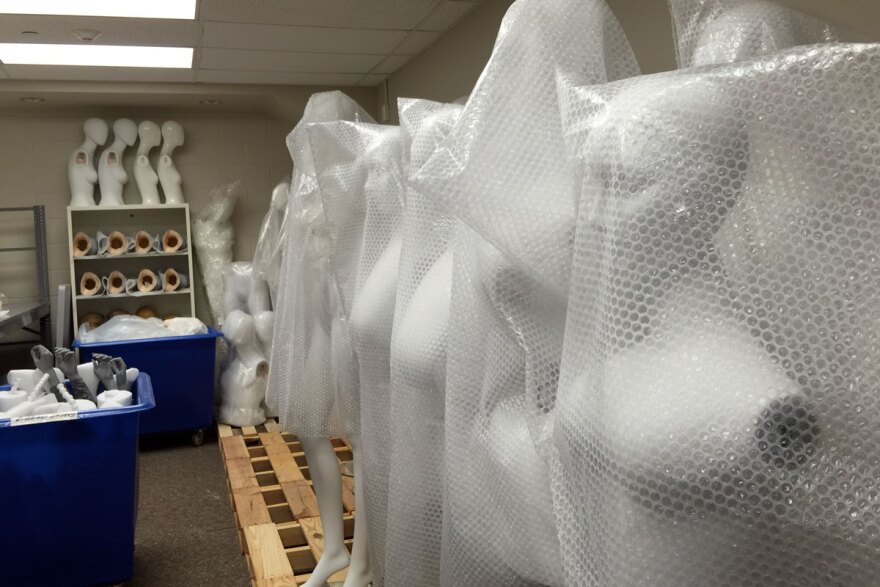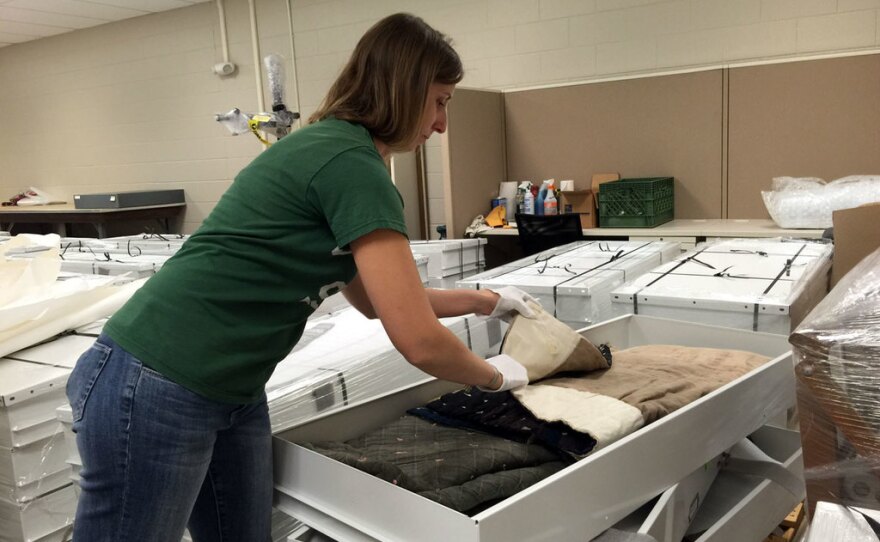Whether it's pre-Columbian burial ties from South America or a pre-millennium MC Hammer doll, you never know what you might find at Colorado State University's Avenir Museum.
At the Avenir – French for "future" – the collection of more than 20,000 items of clothing and textiles aid students in directing the future of fashion by showing them the past.
"In today's society, we have it so easy," said Doreen Beard, director of operations and engagement at the Avenir, which is part of CSU's Department of Design and Merchandising. "I mean, every age probably thinks that but - relatively speaking - we do. If we need a new bedspread, we go out and buy it."
The folks at the Avenir have been thinking about the fashions and textiles of the past for a while now.
Before there was the museum, there was just the collection. It was started in the 1950s by Dagmar Gustafson. The former head of CSU's Department of Textiles and Clothing donated items from her personal historic costume collection to help students learn about textiles, textile preservation and design. Curator emerita Linda Carlson grew the collection into one worthy of museum exhibitions
In 2009, a grant from the Avenir Foundation made it possible for the collection to move from CSU's cramped Gifford building to the then-new University Center for the Arts, where it would have its own museum and gallery space. In 2013, another grant provided room to expand – necessary since the collection's first move, as it had grown by almost 7,000 pieces.
But before the renovation could begin, the collection had to move yet again.
Avenir curator and collection manager Megan Osborne has been a part of moving all 20,000 pieces four times.

"Unfortunately it's not like moving, packing your home," Osborne said. "There's a lot more sort of pre-planning that has to go into it."
First of all, there's just the sheer size. To safely store the collection during the renovation, Osborne needed the ultimate walk-in closet – complete with climate control. Luckily, the former Centers for Disease Control and Prevention facility on the university's Foothills Campus fit the bill.
"Textiles are really vulnerable to humidity and temperature swings," Osborne said. "What we don't like to see is a jump of 20 degrees of temperature, or 15 percent humidity... That really is damaging to fibers. They swell, they expand and contract with moisture."
Finding the space was just one hurdle. Then you have to pack it.
Most of the items had to be inventoried and padded in enamel drawers, specially created not only to move the items, but to house them once they came back to the museum. That return process began in May.
All summer, Osborne and a team of volunteers, like Jan Alexander, have been methodically unpacking the museum, again.
Every Thursday, Alexander puts on a pair of white cotton gloves and spends hours removing exhibits from their carefully packed tissue paper, documenting their intake number, photographing them, and getting them ready for permanent storage.
She said it's been fun. Every piece of material and every article of clothing - including the 2,000 pieces of lace, 200 Japanese kimonos and one rhinestone bra worn by comedian - tell a story.
Like Diller's bra for example, it was created by Richard Blackwell. You know, THE Mr. Blackwell. The one Doreen Beard points out was responsible for the annual celebrity-skewering best and worst dressed list.
"It was the worst dressed list that is often remembered simply because the comments could be pretty sharp and it was directed mainly at famous people, the Hollywood set, that sort of thing," Beard said.
Then there are the more personal stories. As Jan Alexander unpacks silk pieces from India, she likes to imagine what life was like for the original owner.
"There was one piece that - it looked like a woman's top - but it also looked like it had a side panel where maybe she could breast feed a child," Alexander said. "So stories are going on in your head as well when you're looking at these pieces going, oh, well she looked like she was a very tiny woman. This might have been an overdress. Maybe there's no back on it because it's hot in India."

Megan Osborne also likes to wonder, particularly about some of the more couture fashions. Like the unlined lace pantsuit from the 1970s.
"Some of the pieces come out and you think, really? That's a brave person," Osborne said.
While the temptation to play dress up is strong, don't bother looking for a dressing room at the Avenir, trying on any of the clothes is against the rules.
"Knowing what putting a garment on your body does to textiles really makes you pause and understand that you can't put on that hat from the 1910s," Osborne said. "And, you know, we're the stewards of this collection. We are here only for a temporary time to take care of it and to pass it on to the next generation, so we really try to be cognizant of that, and so trying things on is a big no-no."
Preservation is the focus for the Avenir, even for the everyday things, Doreen Beard added.
"We don't stop and think about the time and the effort going back to even raising, or tending, the plant that gave you the source of that fiber, and then having to spin it and then having to weave it and dye it," Beard said. "I mean, the time and the effort is staggering when you stop and think about it."











